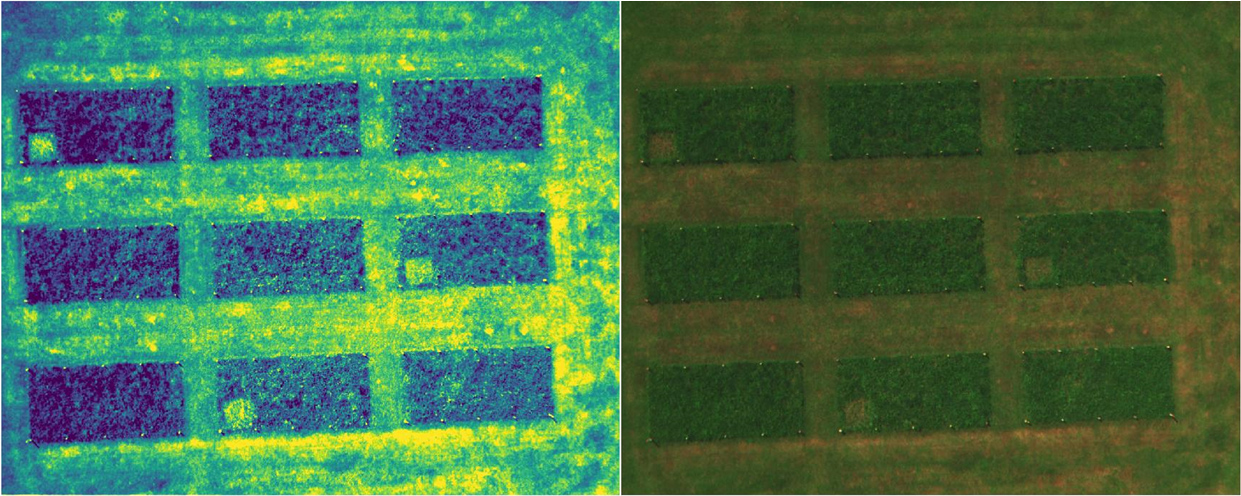Depending on the wavelength, grassland plants can either absorb the sun's radiation and use it for photosynthesis, or transmit it, i.e. let it pass through the leaves, or reflect it. Plants have very specific reflection properties, especially in the visible range and in the near infrared range. These reflection properties can be measured with suitable sensors and enable new and deep insights into the biophysical processes of plant growth. Using appropriate methods, nutritional status, vitality, drought tolerance or biomass growth as well as important quality parameters can be calculated from the data.
The wavelength ranges recorded are selected so that the spectral channels of the Sentinel-2 satellites can be covered by the camera. In this way, results from precise scientific tests can be transferred to regional and supra-regional levels using satellite data. The sensor will be used in both existing and future test facilities and will, above all, enrich the area of non-destructive observations.
Reflection data in different spatial resolutions form the basis for modern grassland farming and are an integral part of digitalization concepts in crop production. Further basics on the topic are being worked on in the “SatGrass” project at the HBLFA .








